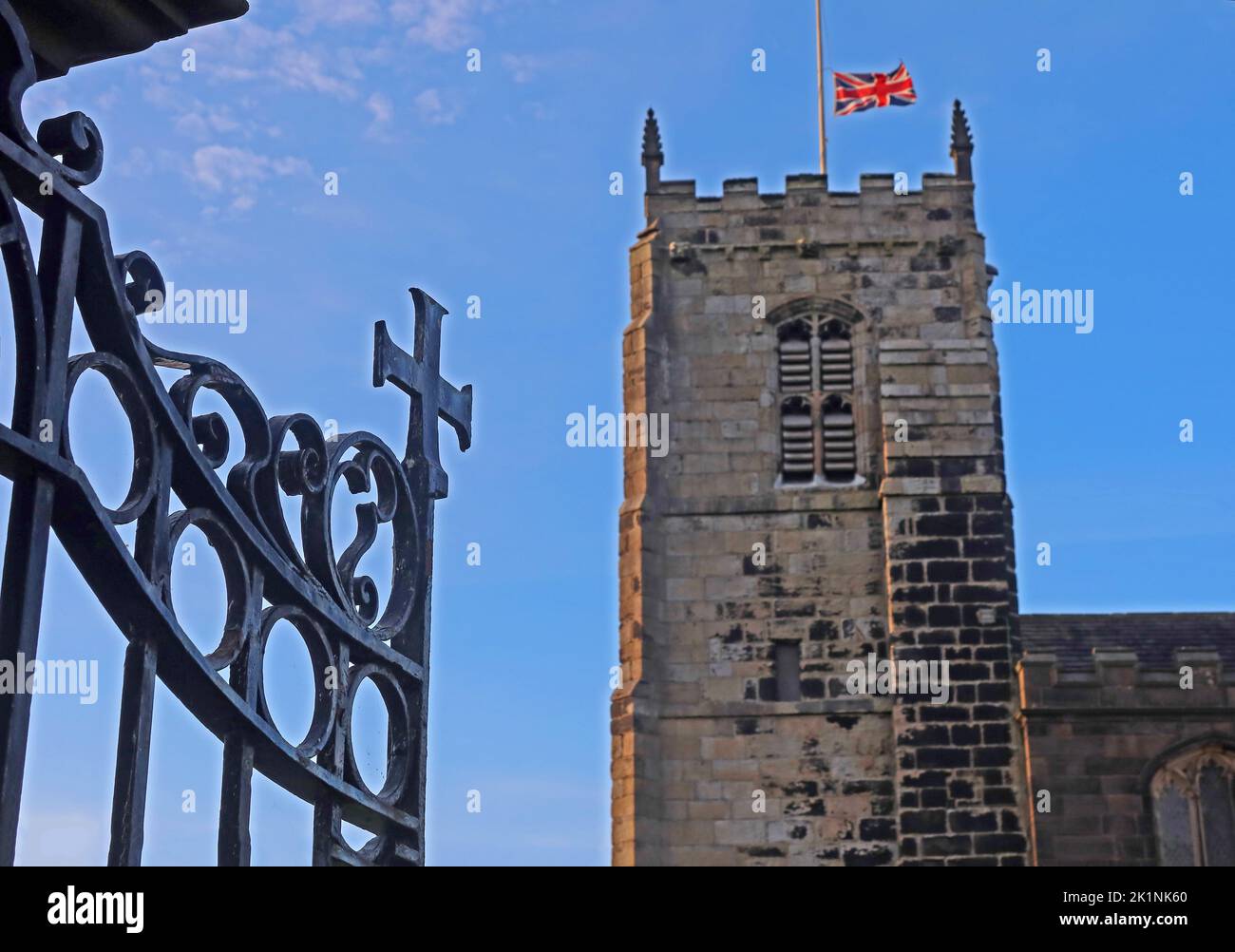St Michael and All Angels Church, Mottram parish, overlooking the village of Mottram in Longdendale,Hyde,Tameside,Manchester,England,UK, SK14 6JL

Image details
Contributor:
Tony Smith / Alamy Stock PhotoImage ID:
2K1NK60File size:
53.1 MB (1.2 MB Compressed download)Releases:
Model - no | Property - noDo I need a release?Dimensions:
5142 x 3608 px | 43.5 x 30.5 cm | 17.1 x 12 inches | 300dpiDate taken:
17 September 2022Location:
Mottram in Longdendale,Hyde,Tameside,Manchester,England,UK, SK14 6JLMore information:
St Michael and All Angels Church stands on Warhill overlooking the village of Mottram in Longdendale, Greater Manchester, England. The church is recorded in the National Heritage List for England as a designated Grade II* listed building. It is an active Anglican parish church in the diocese of Chester, the archdeaconry of Macclesfield and the deanery of Mottram The earliest evidence of a church on the site is in 1225 when clergy attached to the church were witnesses to local documents. There is a further reference to the church in a taxation document dated 1291. The present church dates from the end of the 15th century. A major restoration took place in 1854–55 by E. H. Shellard, during which the nave roof was raised The church is built from local stone quarried from Tinsell-Norr in Perpendicular style. The plan consists of a west tower, a five-bay nave with a clerestory, north and south aisles, a two-bay chancel and a south porch. At the east end of each aisle is a chapel. The north chapel is known as the Hollingworth Chapel and the south chapel is the Staley Chapel. The tower is in four stages with angled buttresses, a three-light west window above which is a clock face and two-light belfry openings. In one corner is a stair turret. At the top is a castellated parapet with crocketed corner finials. In the churchyard is a sundial with a dial dated 1811. It consists of a stone shaft with a copper dial and a gnomon. It is listed at Grade II. Also listed at Grade II are the gatepiers, railings, steps and walls of the churchyard. Near the church is a medieval cross which was restored in 1760 and again in 1897, the latter restoration being to celebrate the diamond jubilee of Queen Victoria. The octagonal shaft stands on a stepped circular ashlar plinth. On its top is a cubical sundial with three copper faces. It is listed at Grade II*